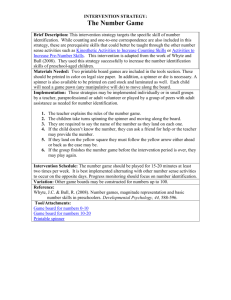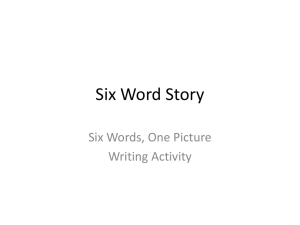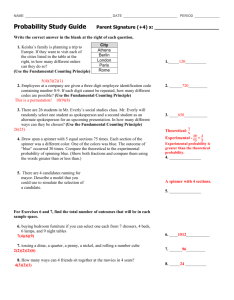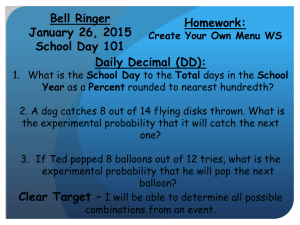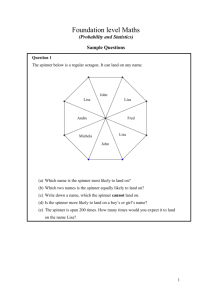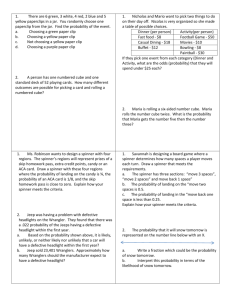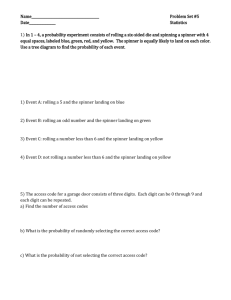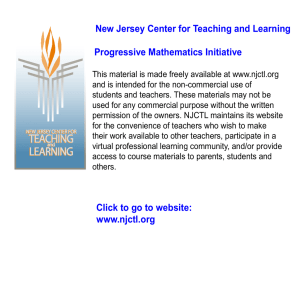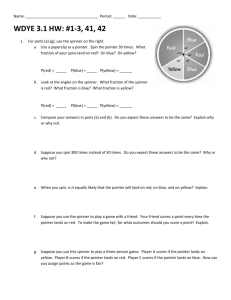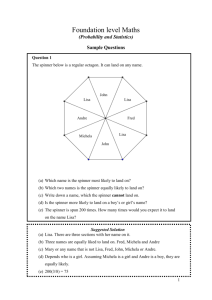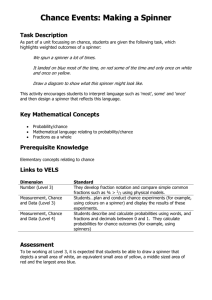Task 2a size of unit Task 2a for cross
advertisement
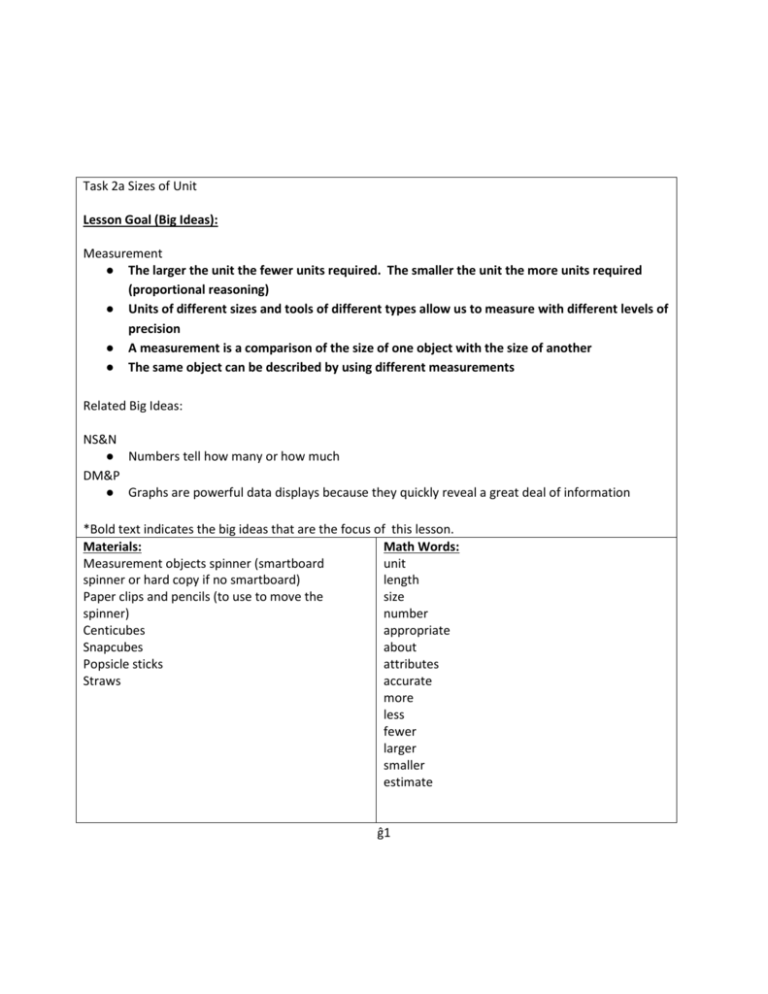
Task 2a Sizes of Unit Lesson Goal (Big Ideas): Measurement ● The larger the unit the fewer units required. The smaller the unit the more units required (proportional reasoning) ● Units of different sizes and tools of different types allow us to measure with different levels of precision ● A measurement is a comparison of the size of one object with the size of another ● The same object can be described by using different measurements Related Big Ideas: NS&N ● Numbers tell how many or how much DM&P ● Graphs are powerful data displays because they quickly reveal a great deal of information *Bold text indicates the big ideas that are the focus of this lesson. Materials: Math Words: Measurement objects spinner (smartboard unit spinner or hard copy if no smartboard) length Paper clips and pencils (to use to move the size spinner) number Centicubes appropriate Snapcubes about Popsicle sticks attributes Straws accurate more less fewer larger smaller estimate ĝ1 Getting Started: 1. Have students come to the smartboard and use the smartboard object spinner. (If a smartboard is not available use the physical object spinner with a pencil and paperclip. 2. Have a volunteer spin the spinner and have students estimate which tool would be an appropriate tool, (centicube or straw)? Ask students why? 3. Measure the object using both measurement tools, (centicube, then straw). Which one is more appropriate? And Why? 4. Repeat the process again 2-3 more times. Working On It: 5. Have students get into working pairs. Give each pair of students a spinner, and a variety of each math measurement tool (centicubes, snapcubes, popsicle sticks and straws). 6. Using the spinners have each partner take a turn to spin and record their object on the chart. 7. After they record their object they will then estimate which two math tools would be most appropriate to measure the object spun on the spinner. 8. Repeat the process again so each partner has had 2 turns. 9. Each partner will choose one of their objects from their estimates and measure that object using the tools they recorded on their chart. ĝ2 Consolidation: Guiding Questions Why did you choose those measurement math tools? Which one is it more appropriate? Why? Big Ideas to Highlight ● Units of different sizes and tools of different types allow us to measure with different levels of precision ● A measurement is a comparison of the size of one object with the size of another The same object can be described by using different measurements ● What did you notice when you were measuring the object with the two different tools? What if you used _________ as your measurement tool? How would your measurement change? ● The larger the unit the fewer units required. The smaller the unit the more units required (proportional reasoning) Independent Practice: Choose 1 object. Measure the object using 2 different tools. Which one is more appropriate and why? ĝ3 Assessment: Assessment as learning: Are the students able to identify appropriate units of measurement and explain why they chose that measurement tool? Assessment of Learning: The independent practice will determine if the student has a solid understanding of the big ideas. (See checklist below) Guiding Questions Big Ideas to Highlig ht Why did you choose those measurement math tools? ● Which one is it more appropriate? Why? What did you notice when you were measuring the object with the two different tools? What if you used _________ as Yes No Units of differe nt sizes and tools of differe nt types allow us to measur e with differe nt levels of precisi on ĝ4 your measurement tool? How would your measurement change? ● ● ● A measur ement is a compar ison of the size of one object with the size of anothe r The same object can be describ ed by using differe nt measur ements The larger the ĝ5 unit the fewer units require d. The smaller the unit the more units require d (propor tional reasoni ng) ĝ6 Expectations: Measurement: Overall Expectations: -estimate, measure, and describe length, using non-standard units of the same size. Specific Expectations: -estimate, measure (i.e., by placing nonstandard units repeatedly, without overlaps or gaps), and record lengths. -demonstrate an understanding of the use of non-standard units of the same size (e.g., straws, index cards) for measuring. - describe, through investigation using concrete materials, the relationship between the size of a unit and the number of units needed to measure length. Number Sense and Numeration: Overall Expectations: - read, represent, compare, and order whole numbers to 50, and use concrete materials to investigate fractions and money amounts; - demonstrate an understanding of magnitude by counting forward to 100 and backwards from 20 Specific Expectations: -demonstrate, using concrete materials, the concept of one-to-one correspondence between number and objects when counting. - represent, compare, and order whole numbers to 50, using a variety of tools. Data management: Overall Expectation: -collect and organize categorical primary data. Specific Expectations: -demonstrate an ability to organize objects into categories by sorting and classifying objects using one attribute, [or] size, and by describing informal sorting experiences ĝ7
